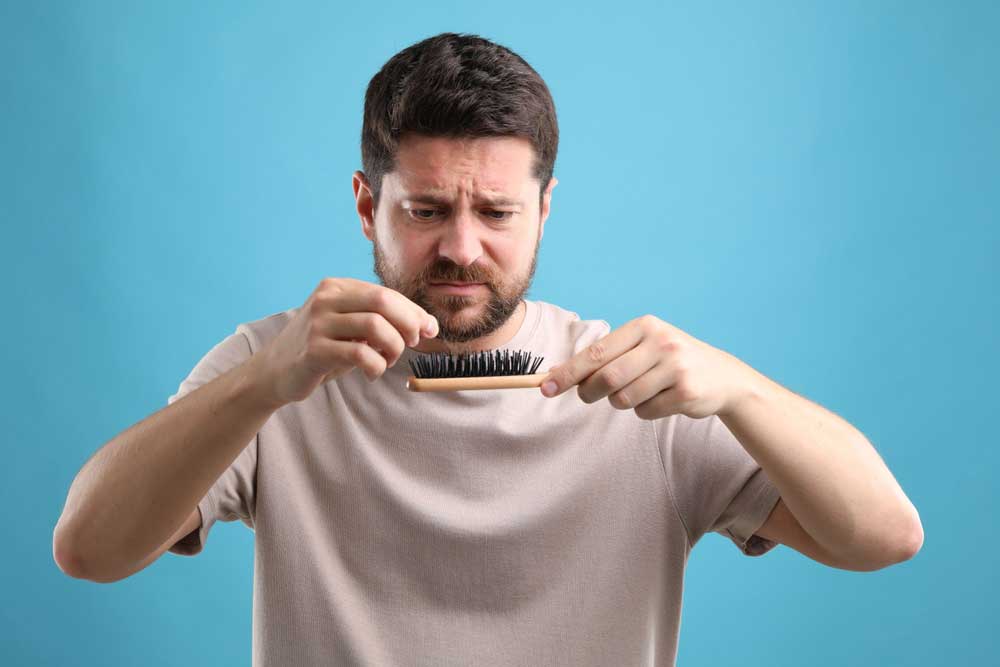According to the majority of articles on the topic, we lose about 100 hairs per day. When you hear that number, it’s easy for many of us to wonder how we aren’t all balding. The reason that this isn’t the case is because our hair is continuously going through growth cycles. 4 growth cycles to be specific:
- Anagen: the growth phase
- Catagen: the involution phase
- Telogen: the resting phase
- Exogen: the shedding phase
The concept of losing one’s hair is never a pleasant idea, yet for many it slowly approaches until it becomes a harsh reality one day. If you decide you want to have a hair transplant, it is very important to do your proper homework on the matter. If you have any questions regarding hair restoration, feel free to give us a call. We’d love to help you with all your hair restoration needs.
1. Anagen Phase
The Anagen stage is the state in which your hair actually grows. This occurs at an average rate of 0.5 inches per month. The amount of time a hair will remain in the anagen phase varies from person to person, although scientists estimate it is between 4-6 years for scalp hair. On the other hand, body hair is said to have shorter anagen phases. The anagen phase is particularly interesting depending on the type of follicle you are studying. In men and women with Androgenic Alopecia, the hormone Dihydrotestosterone (DHT) shortens the anagen phase and miniaturizes the follicles on the vertex of the scalp, whereas androgenic hair, such as chest hair and beards, are dependent upon Dihydrotestosterone to grow. The anagen phase can also be cut short through a number of factors including stress, poor diet, and ageing. Once the Anagen phase ends, the Catagen phase begins
2. Catagen Phase
The Catagen phase refers to the period of time in which the hair detaches from the blood vessels and dermal papilla. During this stage, the hair stops growing as the blood flow is removed, depriving the follicle of much-needed oxygen and nutrients that would otherwise promote growth. This lasts for approximately two weeks and acts as a catalyst for the next stage, the Telogen phase.
3. Telogen Phase
The Telogen phase is where the hair follicle rests for approximately 3 months before starting the Anagen phase again. In rare circumstances, people can suffer what is known as Telogen Effluvium. This is the noticeable thinning caused by long severe daily shedding periods and a longer telogen phase. Causes for this can range from factors such as a poor diet, stress, deficiencies in vitamins and minerals, or a combination of all of the above. However, usually after three months, the Exogen Phase will start.
4. Exogen Phase
The Exogen Phase which is actually just an extension of the telogen phase is where the hair sheds and new hair simultaneously starts to grow and begin a new anagen period. As mentioned previously you can shed up to 100 hairs a day and not even notice. You are probably wondering why you aren’t going completely bald every few years for a three month period – Well each hair follicle is a complex mini organ that has its own biological clock and is independent so whilst some will be synchronized simply by coincidence it would be incredibly rare for all to synchronize completely.
As stated previously shedding is an ongoing process and may be seasonal and indeed even gender dependent as Research suggests that women experience slightly higher rates of telogen than Men do during July, which sees the telogen hairs falling out over 3 months later, in mid-October or November. The reason for this is unclear, but some suggest that the summer heat may provide some explanation.
You Might Also Like To Read
WHAT MAKES AFRICAN AMERICAN HAIR TRANSPLANTS UNIQUE?
Due to recent advancements in technology, the FUE approach has become a very viable option…
5 WAYS STRESS CAUSES HAIR LOSS
It’s best to learn these signs sooner than later!
It’s best to learn these signs sooner than later!


